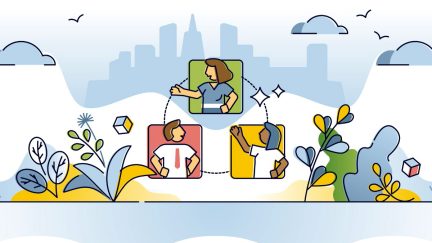Want the latest retirement plan adviser news and insights? Sign up for PLANADVISER newsletters.
Present Value for Future Payoff
A practice is more than just a way to collect a paycheck, says Jeff Concepcion. Many advisers think of it that way, but when they want to monetize the practice, they’re disappointed.
Concepcion, CEO and founder of Stratos Wealth Partners in Cleveland, explores the steps advisers should take to change their mindset and create a scalable business in his case study, “Turning Your Practice Into a Business: Creating Profitable, Manageable and Sustainable Enterprise Value.”
Mindset can be vitally important, Concepcion tells PLANADVISER. “In the independent space, there’s more risk for someone passing away without a plan,” he says. In the case study, Concepcion speaks with one adviser who finds himself unexpectedly very ill, not at all sure he’ll even be able to return to work, and who admits he has not locked in a succession plan. The story could serve as a wakeup call to those who give only passing thought to the future of their firm.
A change in business plan and mindset does not always have to have its origins in emergency. Concepcion describes the principal of a large and highly successful advisory practice who came to Stratos for help. “To say that it s unusual for an adviser who s generating well in excess of a million dollars in annual revenue from more than $200MM in assets under management (AUM) to be concerned about his business, would be an understatement,” he says in the case study. “But that was precisely the impetus that motivated this adviser to contact us.”
This successful adviser felt he had reached a point of maximum personal capacity and realized that the business had also reached its capacity and would no longer continue growing, and would likely no longer exist after the adviser’s retirement.
Concepcion describes the transformation of the practice into an organization that could and likely will exist without him. The adviser transferred most of his daily to-do list to a team of specialists, and evolved an individual practice into a scalable business generating nearly twice its previous annual revenue.
Key Players
Concepcion’s case study asks the questions advisers need to answer about their own practices. Human capital is a vital element, he says. Concepcion suggests looking over the associates in a practice and ranking them in order of critical function. Then, he says, “I’d ask how I can lock in those people and provide incentives for them to stay, for the business as well as my family’s interest.”
The adviser who wants to build enterprise value must be prepared to answer some tough questions. “In my absence, is there still a business?” asks Concepcion. “Are there systems and processes in place that someone would be able to step in and use to continue providing advice to clients and reviews, and professional management, if I didn’t show up tomorrow? Would my staff stay on?”
Bigger practices rely more heavily on other people to do a range of things, such as education or business development. “The principal should absolutely strive to make himself irrelevant,” Concepcion says. “You can of course be as engaged as you like—but now you have something of value. That is a goal of someone who thinks of himself as a business owner. The business does not suffer in your absence.”
Key takeaways from the case study are:
- Your firm must be more than just you. If it’s going to have real enterprise value, there has to be some type of infrastructure and a mechanism for knowledge-transfer.
- Identify the unique thing(s) you contribute to your practice that nobody else can contribute at the same level, then offload everything else to others.
- Select the individuals that you want to be part of the long-term future of your firm, and lock them in.
“Turning Your Practice Into a Business: Creating Profitable, Manageable and Sustainable Enterprise Value” was released by the Alliance for Registered Investment Advisors (aRIA), a research study group that comprises six RIA firms. The case study is available free of charge on the aRIA website.
You Might Also Like:

RIAs Face Talent Crunch, Schwab Reports

More Than Half of Plan Advisers Expect to Use AI
